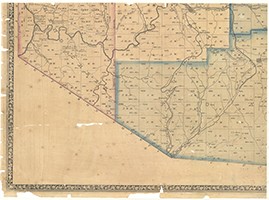

This underestimate is, effectively, zero for 2010 and grows each year to reach 1% by 2020. The 2010-2020 postcensal estimates are known to underestimate the population by about 1% nationally. Use caution when interpreting population changes that use different “postcensal” version estimates.
ELK COUNTY PA UPDATE
We will update this experience, including the 2010-2019 estimates, when the Bureau releases county-level 2010–2020 intercensal estimates by age, sex, race, and ethnicity. The most recent county-level data available by age, race, sex, and ethnicity are the Vintage 2020 Population Estimates () for 2010 to 2019 and the Vintage 2021 Population Estimates () for 20. Historically, Elk County was formed from parts of Jefferson, McKean. These provisional estimates are “postcensal estimates,” and the final estimates are “intercensal estimates.” USAFacts used the final intercensal estimates for 1970 through 2009 and the provisional postcensal estimates for 2010 and after. Founded in 1843, Elk County is one of 67 counties in the state of Pennsylvania. Showing the North Line of Elk County as fixed by the State Commissioners. 'Compiled from the most recent and authentic surveys. Hand colored to emphasize township areas. Every decade, the Bureau reconciles these estimates and releases final data. County cadastral map showing townships, warranty-deed tracts, tract numbers, tract acreages, and initials of warrantees names. The Census Bureau releases annual provisional population estimates based on the previous decennial census and other data on births, deaths, and migration/immigration. The center offers interactive exhibits and displays and encourages a hands on experience. The “less than 1” and “1 to 4” groups for the 19 censuses were combined to create a consistent “0 to 4” group across all available data. The Elk Country Visitor Center is a premier location for viewing elk and other wildlife in Pennsylvania. Comparison pages include footnotes explaining that pre-2000 and post-2000 data comparisons will result in lower values for the separate race categories in proportion to the expected “two or more race” population.įor population by age, USAFacts grouped people ages 0–4 in different ways depending on the census. This category can’t be compared prior to 2000.

These were the only categories included before 1990 for the available data.Īny comparison with the 1990 census to newer data will include the “white,” “Black,” and two categories added that year: “American Indian/Alaska Native” and “Asian or Pacific Islander.”ĭata from 2000 onward will also include the “Two or more race” category. To provide the most detail across all available data, USAFacts combined the census data on race and ethnicity into three groupings.Īny comparison of data from before 1990 only includes the “white,” “Black,” and “Other” race/ethnicity categories. But how the Census Bureau reported and grouped those populations changed over time. The Census Bureau’s Population Estimates Program data by county includes details like counts by age, race, or ethnicity and goes back for decades.


 0 kommentar(er)
0 kommentar(er)
